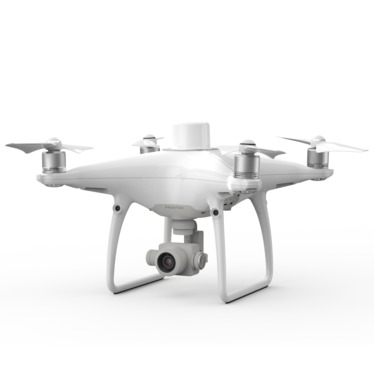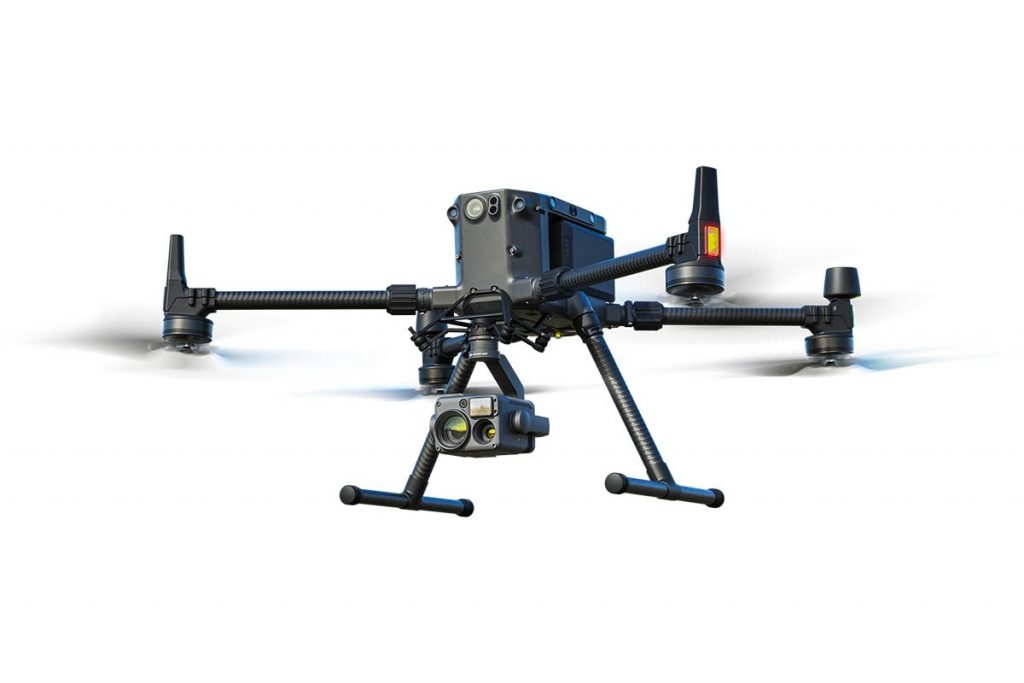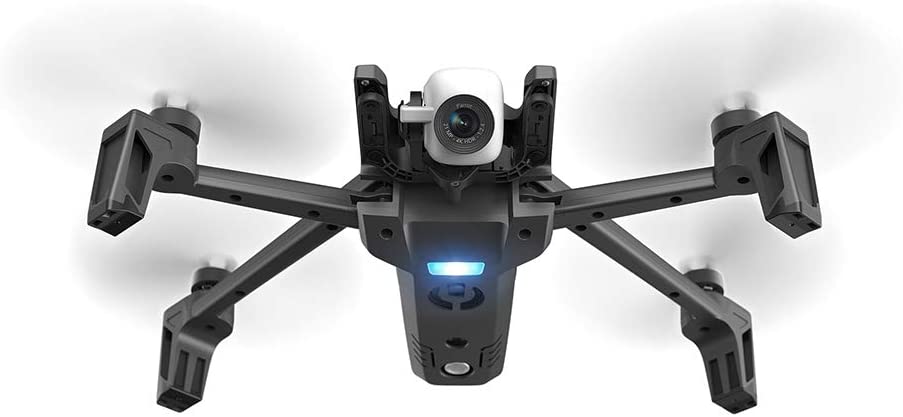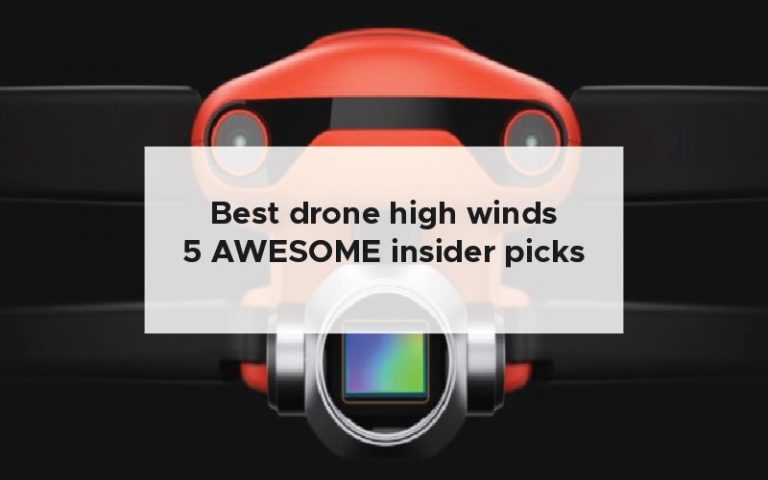Flying a drone has been made easier and easier by advanced flying software. Even the most beginner of drone pilots can easily get in the air and have an enjoyable flight. However, there are still some hardware limitations which means even the best drone pilots in the world would not be able to fly in some conditions. One of those conditions is very high winds. You see, a drone’s maximum speed dictates how stable it will be in high winds. Also, drones will have to adapt quickly to any wind gusts or quick changes in wind speed or direction. In this article, we are going to go over the best drone for high winds and give you some tips and tricks for flying in high wind conditions.
In a hurry? This is the best drone in high winds:
The best drone for high winds is the Autel Evo 2 Pro. Of all of the drones that we reviewed in this article this drone has a maximum speed of 20 metres per second and is able to resist a wind speed of 17 to 20 m/s (which is a level VII wind force).
This drone is incredibly stable and can handle the highest of wind speeds. It has a maximum wind resistance of approximately 17 m/s which is a level VII force. This means that you can fly in quite strong winds and have confidence that your drone will return safely.
The maximum flight speed of 45 mph (or 20 m/s) means that the drone is able to quickly adapt to any changing wind conditions and also get to and from your landing spot quickly and efficiently.
Another thing I absolutely love about this drone is that it has 360° obstacle avoidance. It is equipped with 19 groups of sensors which includes 12 visual senses, the main front facing camera, ultrasound, and other sensors which enable the building of a three-dimensional map which it uses to plan its path. This, backed up with the incredibly fast processing power means that your drone will be able to follow you in real time through a range of quite complicated environments.
Check out the YouTube video which highlights this amazing omnidirectional obstacle avoidance:
This stable drone is also a 6K portable folding drone. Which means that you can be sure to capture great footage since the drone is able to fly in a range of conditions whilst remaining super stable.
If you are looking for the best drone for high wind conditions at an affordable price, I think this is it. However, if you are looking for something a little bit different to this drone here are my other recommendations:
Other drones to consider
Because everyone’s use of the drone is different the Evo 2 Pro may not exactly match what you want from a drone. Here are another four options which have been known to be very stable in high wind conditions.
DJI Phantom 4 RTK

This drone has been manufactured by DJI for professional use. The thing that makes this drone perfect for high wind conditions is that it has created a next-generation mapping with incredible accuracy both in the horizontal and vertical axis.
This drone boasts accuracy of:
- 1 cm horizontal positioning accuracy
- 1.5 cm vertical positioning accuracy
- 5 cm absolute horizontal accuracy of photogrammetric models.
This drone has an RTK (real-time extended) positioning system integrated directly into the drone. You can see this as the little bump which is not present on other drones at the top of the drone casing. It is this sensor which provides centimetre level positioning data for improved absolute accuracy for data collection.
This sensor is also amazing for keeping your drone in a stable position and flight path in high winds. Sure, this drone has been made for surveying purposes but the same technology could benefit your high wind use case.
DJI Matrice 300 RTK

The DJI Matrice uses the same technology of the real-time extended positioning system in this drone. This is another commercial drone that takes inspiration from modern aviation systems. This drone hosts up to 55 minutes of flight time and has six directional sensing and positioning.
One of the most interesting things about this drone is that it has an improved transmission system which is the new OcuSync system which transmits video up to 15 km away and supports 1080p video.
This drone has a maximum wind resistance of 15 m/s which is only a little under the EVO 2 Pro. And has a maximum speed of 23 m/s. The enhanced ability is due to the jewel vision and sensors that appear on all six sides of the aircraft. It has a maximum detection range of up to 40 m and keeps the drone in a very stable flight.
If you have the budget for such an expensive drone the Matrice 300 is a fantastic option for you.
Parrot Anafi

The Parot Anafi is an underrated drone that is capable of many awesome things and gives the DJI drones a run for their money. The Work bundle includes:
- 1 Parrot ANAFI drone
- 4 smart batteries
- 1 Parrot Skycontroller 3
- 1 compact shoulder bag
- 1 16 GB SD card
- USB-A to USB-C cables
- 8 additional propeller blades
- 1 multi-port USB charger
- 1 mounting tool
- One-year subscription to Pix4Dcloud
This is more than enough to get the most serious photographer started and ready for whatever each flight has in store for them! These are the features that this drone comes with:
- Pro drone with 4K camera: Its 4K HDR/ 21 MP Camera captures high-resolution aerial images with a unique 180° orientation, enabling you to inspect, monitor and film difficult-to-access areas. Its zoom allows to keep a safe distance during inspection work without loss of quality. The hybrid 3-axis image stabilization delivers Ultra-Stable video and photos.
- Always ready to take off: the 4K anafi UAV is the efficient solution for all your needs. With a combined flight time of 4×25 min, a mobile USB c-type charge (to charge your batteries between 2 flights) and a multi-port USB charger (to charge your batteries simultaneously), your drone is always ready to fly in no time. Its perfect stability in winds of up to 50km/H and its silent flight are two additional advantages for successful videos.
- Easy operation: easy to carry in its compact shoulder bag, The drone can be operated intuitively even in difficult areas with the freeflight 6 mobile application. Automatic flight Modes such as Flightplan (not included, in-App purchase) will allow you to perform reconnaissance missions. Take advantage of smart RTH (return home) and geofence (punctual restriction of the drone At altitude and distance) functions for secure flights.
- 3D MODELLING: Create 3D models and take precise measurements of distances and surfaces: Anafi Work includes a one-year subscription to Pix4Dmodel to create 3D models easily and quickly on your computer (access Pix4Dmodel via the myPBS coupon included in the pack). The drone is also compatible with Pix4Dcapture (free application) which allows you to capture stand-alone images optimised for the creation of your 3D models.
Mavic Air 2

I love my Mavic Air and was happy when DJI desided to upgrade the drone. It seems like they have done it in all of the right ways!. The Mavic Air 2 takes power and portability to the next level, offering advanced features in a compact package. It has a range of intelligent shooting functions and excellent image quality put aerial masterpieces within reach.
The camera includes:
- 1/2-inch CMOS sensor: it has smooth 4K/60fps video. The D-Cinelike flat color profile retains more information for post-processing. The HEVC (H.265) video codec records more image information, uses less storage, and preserves the dynamic range and detail of your footage, ensuring next-level content.
- 8K Hyperlapse: this will allow you to simply warp time and space for especially stunning footage.
this is an inexpensive and ultra portable drone that I think you’d be silly not to consider if you want to be a little more budget consious.
- Weight – 570 g
- Dimensions
- Folded: 180×97×74 mm (Length×Width×Height)
- Unfolded: 183×253×77 mm (Length×Width×Height)
- 34 minutes max flight time
- Max wind-speed resistance – 8.5-10.5 m/s
- 8 GB internal storage
- Max speed – 19 m/s
This is a great little drone and it will satisfy most hobby photographers easily!
- Up Your Game: The Mavic Air 2 camera drone takes power and portability to the next level. It combines a powerful camera with intelligent shooting modes for stunning results.
- Next-Level Content: Capture impressive 48MP photos with a 1/2-inch CMOS sensor while the 3-axis gimbal provides 4K/60fps video.
- Improved Flight: An impressive flight time of up to 34 minutes allows you to pull off epic, fast-paced shots.
- Intelligent Tracking: Mavic Air 2 features intuitive shooting functions that make aerial photography easier than ever.
- Video capture resolution: 4K HD
Drone wind resistance levels
The drone wind resistance levels depend on the top speed of the drone as well as any top speed limitations the drone has. The top speed of many drones is limited by the grand speed rather than the relative speed of the wind. So, for example, if you are flying with a strong tailwind the top speed of the drone will remain the same. This tells us that the software is calculating the top speed of the drone based on the GPS location and limits that way.
Some drones have multiple modes such as beginner and sports mode. And you can limit the top speed that the drones are able to achieve by selecting an advanced or intermediate flying mode.
Quite often, you will see that the manufacturers quote the wind resistance in terms of a “level”. This level is known as the Beaufort scale. It is an empirical measure that relates wind speed to the observed conditions weather at sea or on land.
The scale was derived in 1805 by a rear admiral on an Irish Royal Navy vessel. Here, in the table below, we have the levels of the Beaufort scale and the wind speed in metres per second which each level refers to. If your drone manufacturer quotes levels use this table to determine whether or not a drone would be suitable for the wind conditions that you experience in your local area.
Levels of wind
| Level | Wind speed |
|---|---|
| 0 | < 0.5 m/s |
| 1 | 0.5–1.5 m/s |
| 2 | 1.6–3.3 m/s |
| 3 | 3.4–5.5 m/s |
| 4 | 5.5–7.9 m/s |
| 5 | 8–10.7 m/s |
| 6 | 10.8–13.8 m/s |
| 7 | 13.9–17.1 m/s |
| 8 | 17.2–20.7 m/s |
| 9 | 20.8–24.4 m/s |
| 10 | 24.5–28.4 m/s |
| 11 | 28.5–32.6 m/s |
| 12 | ≥ 32.7 m/s |
The strongest wind gust ever recorded was 231 mph which is about 103 m/s. Clearly, you would never consider flying a drone even close to that. Even the scale, above, only goes to 32 m/s that is about one third of the maximum gust ever recorded.
Before purchasing a drone, if you live in a windy area, check your local weather information for the maximum wind gusts that you experience during a storm. This will tell you how now strong the wind could get. However, you wouldn’t want to fly your drone in any particularly strong wind or adverse weather conditions.
I have flown my drone in very windy conditions and the DJI GO4 app will tell you that you are experiencing high winds and should land immediately. You would be silly to ignore this advice as there is a very expensive consequence to crashing your drone in high winds.
To give you an idea of the sorts of maximum speeds each drone reaches as well as its maximum wind resistance I have created a table in the next section.
Drone wind resistance
A general rule of thumb sprouted by drone pilots online is that you shouldn’t fly your drone in any wind which exceeds two thirds of its maximum flight speed. This rule of thumb is fantastic if you do not have any other information from the manufacturer of the drone but can be a little bit misleading.
The best place to get the maximum wind resistance data is from the spec sheet from the manufacturer themselves.
In the table, below, I have collated the top speeds and maximum wind resistances of the best drones currently available on the market. This includes consumer level drones as well as professional drones which Hollywood films used to film their amazing footage.
| Drone | Maximum speed | Wind resistance |
|---|---|---|
| Mavic Mini | 13 m/s | 8 m/s |
| Mini 2 | 16 m/s | 10.5 m/s |
| Mavic Air 2 | 19m/s | 10.5 m/s |
| Mavic Pro Platinum | 18 m/s | 10 m/s * |
| Mavic Air | 19 m/s | 10.5 |
| Parrot Anafi | 15 | 14 |
| DJI inspire | 25 | 10 |
| DJI Phantom 4 Pro V2.0 | 20 | 10 |
| DJI Phantom 4 RTK | 31 | 18* |
| DJI Matrice 300 RTX | 23 | 15 |
| Autel Evo 2 Pro | 20 | 17 -20 m/s (Force 8) |
*calculated 2/3 maximum speed
Where there wasn’t the maximum wind resistance quoted on the spec sheet I have simply taken a calculation of two thirds of the maximum speed. This will give you an idea of how each of the drones, above, relate to each other.
Although you can do your best to try not to fly in high winds, sometimes it is just inevitable. It may be that you have to get a certain job done. This could include inspection of a certain location, a certain photography shot or videography brief.
If you have to do, here are the best tips for flying in high winds. Obviously, you have to take great care while flying your drone at higher winds since the margin of error is much smaller.
High wind flying tips
Flying in high winds is an exhilarating and sometimes unavoidable situation. In this section, I will go over all of the best high wind flying tips if you find yourself in a situation where you just cannot put off your flight.
Turn off beginner mode
By turning off beginner mode on your drone you will be able to access higher speeds and advanced drone responsivity.
Drones sometimes have a beginner mode which limits the top speed of the drone whilst also making the drone react a little bit slower (smoother) to any joystick movements.
This is fine if you are trying to learn how to fly a drone but is not great for high winds. Turn this mode off and ideally you should enter a sports mode or sometimes called extreme mode of your drone. This will mean that you will be able to respond quickly to any gusts of winds which may blow your drone off course.
Stay away from updraughts
The interaction of the wind with certain geographical features can create updraughts. Drone wind resistance is often quoted as the resistance to horizontal force from gusts of air. Although drones are very stable when there are sideways forces acting on them the upwards and downwards forces are harder for the drone to regulate. The drone is able to regulate the GPS location of the drone better than the altitude by using the barometer.
For example, you may find that there are higher winds near cliffs and rocks. Not only will these winds result in lateral movement of the air, but the presence of the cliffs will also for some of the air upwards. Birds often use these updraughts for gaining altitude.
Updraughts can also be created by changes in geography away from the ocean such as large steep hills.
My recommendation would be to stay away from any geographical areas which result in a significant updraught being created. This will make your flight a much safer one.
Also, watch out for any other weird wind conditions near objects which can cause your drone to quickly lose control in spiralling air. This happens near large buildings, obstructions, or other man-made features.
Give extra clearance to obstacles
A drone is constantly trying to keep itself in stable flight. This means it is reacting as quick as the software can detect anomalies in the sensors and quickly spool up the motors to counter act the movement. If you want to know more about calibration of sensors check out my other article – why do I have to calibrate my drone? Little-known issues – click here to be taken to article.
The greater the force and the movement of the drone the further the drone will move before the motors are able to correct the movement generated.
Therefore, you should give obstacles in the flight area a particularly wide berth whilst flying in high winds. I recommend getting no closer than approximately 5 m to any trees, walls, or other obstacles.
Don’t hand catch
If you are flying in high winds I would recommend not taking off or landing from your hand. It is common for drone pilots to hand catch their drone when it is coming in to land. The issue is that with high winds the smallest of instability created by the wind will result in movements of the drone which could result in your fingers becoming hit by the propellers.
I have experienced what it is like when the tips of your fingers get caught in the propellers. Even though it was superficial damage with just the outer layer of skin taken off it hurt a amount and resulted in blood being drawn. Also, there was a fair amount of bruising where the propeller repeatedly hit the sides of my fingers.
Therefore, I would recommend getting a landing pad and using it diligently when the conditions are a little bit more wild than you are used to. A landing pad will be able to provide a safe and secure landing spot for pretty much any consumer level drone.
Be careful of debris when taking off and landing
Whilst taking off or landing it is common for the downdraught of the propellers to move some of the debris and light items in the immediate area.
The use of a landing pad will be one of the best ways you can protect your drone whilst also protecting yourself while your drone is taking off and landing.
Land if it starts to get unpredictable
The great thing about modern drones is that they will tell you when they are uncomfortable. For example, the DJI range of drones will tell you if there are high winds and will tell you to land immediately if they feel like the drone is unstable enough and could be dangerous.
If your drone is making repeated warning signs on the app you should take it very seriously. I have pushed past a few warning signs without many issues but, if your drone is regularly pumping them out and you are starting to feel the drone is becoming unsafe and unable to be controlled then you should land as soon as possible.
It is much better to land if your drone tells you to and rearrange the flight rather than pushing through and potentially losing many thousands of dollars worth of drone and high definition footage.
Frequently asked questions
Here are a few of the most frequently asked questions about flying a drone on a windy day.
Can you fly a drone on a windy day?
Yes, you can fly a drone on a windy day. However, the amount of wind which can easily throw off a drone changes according to the drone make and model. There are some drones which will be able to handle a force seven wind which is up to 20 m/s whilst other smaller drones are not able to combat such a high wind.
I recommend that you slowly increase the amount of wind that your drone is flown in so that you can get an idea of what point the drone becomes a little bit harder to control. If you are unsure about whether or not you should fly drone you probably shouldn’t.
Most drone manufacturers have apps that will tell you if the wind is too high by displaying warnings on the drone controller.
How windy is too windy to fly a drone?
Anything above a force seven wind (17 to 20 m/s) is far too fast for a drone to fly. However, this is for the top end of commercial and professional drones and the general rule of thumb is that you shouldn’t fly your drone in winds greater than two thirds of the maximum flight speed.
This rule of the arm is because drone needs to be able to combat winds from a variety of directions and its will quickly deplete the battery if it is trying to stabilise itself in winds greater than two thirds of the maximum flight speed.
If you feel uncomfortable about flying your drone in particularly high winds than my recommendation would be to wait until the winds drop. Quite often it is the wind gusts which cause the biggest issue for the drone as it needs to quickly adapt to the new forces to maintain its position both vertically and horizontally.
Summary
So, there we have the best drones for high winds. If you are thinking of flying in high winds you cannot cheap out on a drone and you must buy one with relatively good hardware and software to combat windy conditions.
If you need to compare drones check out the maximum speed of the drones (if the maximum wind resistance is not reported) this will give you an indication of how much power is available for the drone to combat any windy conditions.
Happy drone and good luck in your windy conditions!




